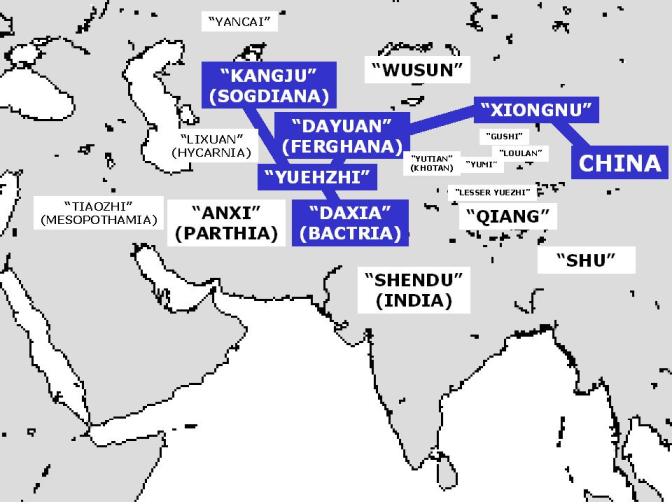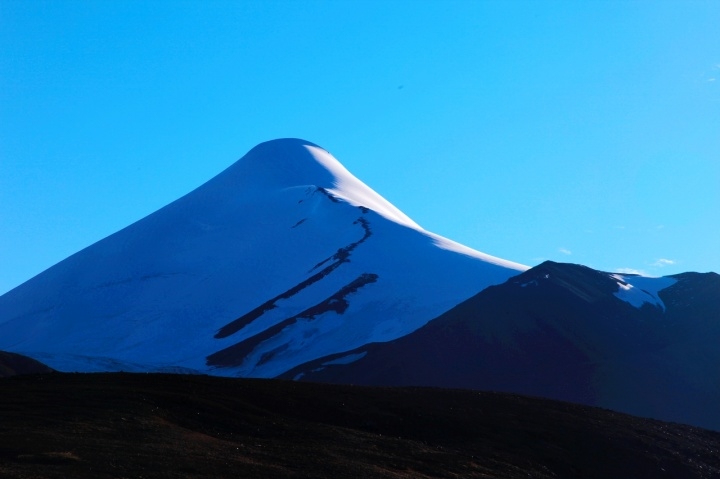|
Kangju Kangri
Kangju Kangri is a mountain in the Karakoram Range of Asia located in the union territory of Ladakh, India. With a summit elevation of 6,725 meters above sea level, it is the highest peak of the Pangong range, a subrange of the Karakoram. Kangju Kangri rises over the winding, tri-headed Kangju glacier and Pangong Lake to the east. See also * List of Ultras of Tibet, East Asia and neighbouring areas This is a list of all the Ultra prominent peaks (with topographic prominence greater than 1,500 metres) in Tibet, China, East Asia and neighbouring areas of Burma and India, including South India and Sri Lanka. Kunlun Mountains and Northeastern Ti ... References External links "Kangju Kangri, India" on Peakbagger Mountains of Ladakh Six-thousanders of the Karakoram {{Ladakh-geo-stub ... [...More Info...] [...Related Items...] OR: [Wikipedia] [Google] [Baidu] |
Ultra Prominent Peak
An ultra-prominent peak, or Ultra for short, is a mountain summit with a topographic prominence of or more; it is also called a P1500. The prominence of a peak is the minimum height of climb to the summit on any route from a higher peak, or from sea level if there is no higher peak. There are approximately 1,524 such peaks on Earth. Some well-known peaks, such as the Matterhorn and Eiger, are not Ultras because they are connected to higher mountains by high cols and therefore do not achieve enough topographic prominence. The term "Ultra" originated with earth scientist Steve Fry, from his studies of the prominence of peaks in Washington (state), Washington in the 1980s. His original term was "ultra major mountain", referring to peaks with at least of prominence. Distribution Currently, 1,518 Ultras have been identified above sea level: 639 in Asia, 356 in North America, 209 in South America, 120 in Europe (including 12 in the Caucasus), 84 in Africa, 69 in Oceania, and 41 in ... [...More Info...] [...Related Items...] OR: [Wikipedia] [Google] [Baidu] |
Ladakh
Ladakh () is a region administered by India as a union territory which constitutes a part of the larger Kashmir region and has been the subject of dispute between India, Pakistan, and China since 1947. (subscription required) Quote: "Jammu and Kashmir, state of India, located in the northern part of the Indian subcontinent in the vicinity of the Karakoram and westernmost Himalayan mountain ranges. From 1947 to 2019, Ladakh was part of the Indian state of Jammu and Kashmir, which has been the subject of dispute between India, Pakistan, and China since the partition of the subcontinent in 1947." Quote: "Jammu and Kashmir: Territory in northwestern India, subject to a dispute between India and Pakistan. It has borders with Pakistan and China." Ladakh is bordered by the Tibet Autonomous Region to the east, the Indian state of Himachal Pradesh to the south, both the Indian-administered union territory of Jammu and Kashmir (union territory), Jammu and Kashmir and the Pakistan-administ ... [...More Info...] [...Related Items...] OR: [Wikipedia] [Google] [Baidu] |
India
India, officially the Republic of India (Hindi: ), is a country in South Asia. It is the seventh-largest country by area, the second-most populous country, and the most populous democracy in the world. Bounded by the Indian Ocean on the south, the Arabian Sea on the southwest, and the Bay of Bengal on the southeast, it shares land borders with Pakistan to the west; China, Nepal, and Bhutan to the north; and Bangladesh and Myanmar to the east. In the Indian Ocean, India is in the vicinity of Sri Lanka and the Maldives; its Andaman and Nicobar Islands share a maritime border with Thailand, Myanmar, and Indonesia. Modern humans arrived on the Indian subcontinent from Africa no later than 55,000 years ago., "Y-Chromosome and Mt-DNA data support the colonization of South Asia by modern humans originating in Africa. ... Coalescence dates for most non-European populations average to between 73–55 ka.", "Modern human beings—''Homo sapiens''—originated in Africa. Then, int ... [...More Info...] [...Related Items...] OR: [Wikipedia] [Google] [Baidu] |
Pangong Range
__NOTOC__ The Pangong Range is a mountain range in the northern Indian region of Ladakh that runs parallel to the Ladakh Range about 100 km northwest from Chushul, along the southern shore of the Pangong Lake Pangong Tso or Pangong Lake (; ; hi, text=पैंगोंग झील) is an endorheic lake spanning eastern Ladakh and West Tibet situated at an elevation of . It is long and divided into five sublakes, called ''Pangong Tso'', ''Tso .... Its highest range is 6,700 m (22,000 ft), and the northern slopes are heavily glaciated. References Bibliography * * * Geography of Ladakh {{Ladakh-geo-stub ... [...More Info...] [...Related Items...] OR: [Wikipedia] [Google] [Baidu] |
Karakoram
The Karakoram is a mountain range in Kashmir region spanning the borders of Pakistan, China, and India, with the northwest extremity of the range extending to Afghanistan and Tajikistan. Most of the Karakoram mountain range falls under the jurisdiction of Gilgit-Baltistan, which is controlled by Pakistan. Its highest peak (and List of highest mountains on Earth#List of world's highest peaks, world's second-highest), K2, is located in Gilgit-Baltistan. It begins in the Wakhan Corridor (Afghanistan) in the west, encompasses the majority of Gilgit-Baltistan, and extends into Ladakh (controlled by India) and Aksai Chin (controlled by China). It is the Greater Ranges, second-highest mountain range in the world and part of the complex of ranges including the Pamir Mountains, the Hindu Kush and the Himalayas, Himalayan Mountains. The Karakoram has eighteen summits over in height, with four exceeding : K2, the second-highest peak in the world at , Gasherbrum I, Broad Peak and Gashe ... [...More Info...] [...Related Items...] OR: [Wikipedia] [Google] [Baidu] |
Kangju Glacier
Kangju (; Eastern Han Chinese: ''kʰɑŋ-kɨɑ'' < *''khâŋ-ka'' (c. 140 BCE)) was the Chinese name of a kingdom in during the first half of the CE. The name ''Kangju'' is now generally regarded as a variant or mutated form of the name . According to contemporaneous Chinese sources, Kangju was the second most powerful state in , after the |
Pangong Lake
Pangong Tso or Pangong Lake (; ; hi, text=पैंगोंग झील) is an endorheic lake spanning eastern Ladakh and West Tibet situated at an elevation of . It is long and divided into five sublakes, called ''Pangong Tso'', ''Tso Nyak'', ''Rum Tso'' (twin lakes) and ''Nyak Tso''. Approximately 50% of the length of the overall lake lies within Tibet in China, 40% in Ladakh, India and the remaining 10% is disputed and is a de-facto buffer zone between India and China. The lake is wide at its broadest point. All together it covers almost 700 km2. During winter the lake freezes completely, despite being saline water. It has a land-locked basin separated from the Indus River basin by a small elevated ridge, but is believed to have been part of the latter in prehistoric times. Names Historically, the lake is viewed as being made up five sublakes, which are connected through narrow water channels. The name ''Pangong Tso'' only applied to the westernmost lake that ... [...More Info...] [...Related Items...] OR: [Wikipedia] [Google] [Baidu] |
List Of Ultras Of Tibet, East Asia And Neighbouring Areas
This is a list of all the Ultra prominent peaks (with topographic prominence greater than 1,500 metres) in Tibet, China, East Asia and neighbouring areas of Burma and India, including South India and Sri Lanka. Kunlun Mountains and Northeastern Tibet Plateau Western Tibet and neighboring areas South-eastern Tibet and neighboring areas Yunnan Daxue Mountains of Sichuan Contiguous Eastern China Taiwan and Hainan South India and Sri Lanka , References External links E. Jurgalski and others:List of Ultras in Tibet * [...More Info...] [...Related Items...] OR: [Wikipedia] [Google] [Baidu] |
Mountains Of Ladakh
A mountain is an elevated portion of the Earth's crust, generally with steep sides that show significant exposed bedrock. Although definitions vary, a mountain may differ from a plateau in having a limited summit area, and is usually higher than a hill, typically rising at least 300 metres (1,000 feet) above the surrounding land. A few mountains are isolated summits, but most occur in mountain ranges. Mountains are formed through tectonic forces, erosion, or volcanism, which act on time scales of up to tens of millions of years. Once mountain building ceases, mountains are slowly leveled through the action of weathering, through slumping and other forms of mass wasting, as well as through erosion by rivers and glaciers. High elevations on mountains produce colder climates than at sea level at similar latitude. These colder climates strongly affect the ecosystems of mountains: different elevations have different plants and animals. Because of the less hospitable terrain and ... [...More Info...] [...Related Items...] OR: [Wikipedia] [Google] [Baidu] |






